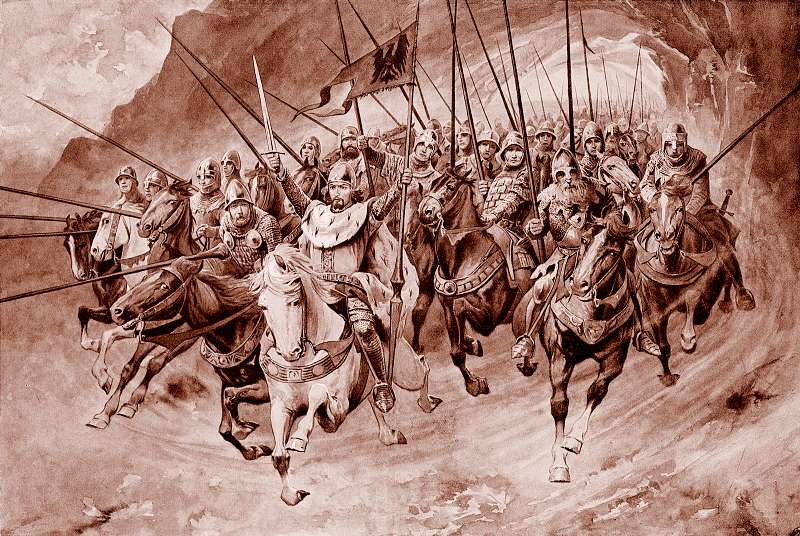|
Louňovice Pod Blaníkem
Louňovice pod Blaníkem () is a market town in Benešov District in the Central Bohemian Region of the Czech Republic. It has about 700 inhabitants. Administrative division Louňovice pod Blaníkem consists of five municipal parts (in brackets population according to the 2021 census): *Louňovice pod Blaníkem (585) *Býkovice (38) *Mrkvová Lhota (16) *Rejkovice (5) *Světlá (10) Geography Louňovice pod Blaníkem is located about southeast of Benešov and southeast of Prague. It lies in the Vlašim Uplands. The highest point is the mountain of Blaník, Velký Blaník at above sea level, notable as the object of one of the most popular Blaník#Legend, national legends. The Blanice (Sázava), Blanice River flows through the municipal territory. The entire territory lies within the Blaník Protected Landscape Area. History The first written mention of Louňovice is from 1149, when there was founded a women's Premonstratensians, Premonstratensian monastery. In 1420, the monas ... [...More Info...] [...Related Items...] OR: [Wikipedia] [Google] [Baidu] |
Městys
Městys (or, unofficially or obsolete, městečko iterally "small town", translated as " market town", is a status conferred on certain municipalities in the Czech Republic, lying in terms of size and importance higher than that of simple ''obec'' (municipality) but lower than that of ''město'' (city, town). Historically, a ''městys'' was a locality that had the right to stage livestock markets (and some other "extraordinary" and annual markets), and it is therefore translated as "market town". The term went out of official use in Czechoslovakia in 1954 but was reintroduced in the Czech Republic in 2006. As of September 2020, there are 228 municipalities on which the status of ''městys'' has been re-admitted. In all cases, these are municipalities that have requested the return of their former title. This title has not been newly awarded to any municipality that would not have it in the past—the law does not even set any specific criteria for it, only procedural competenc ... [...More Info...] [...Related Items...] OR: [Wikipedia] [Google] [Baidu] |
Blaník
Blaník (Czech: ) is a mountain in the Czech Republic near Louňovice pod Blaníkem. The hill and surrounding area is a Protected areas of the Czech Republic, protected landscape area. The Blaník massif consists of two forested rocky hills, Velký Blaník ("Great Blaník"; 638 m) and Malý Blaník (Small Blaník"; 580 m). The mountain has played an important role in Czech national mythology since the Middle Ages (together with the mountains Říp and Radhošť); therefore, during the era of the Czech National Revival, a stone quarried from Blaník was symbolically placed in the foundations of the newly built National Theatre (Prague), National Theatre in Prague. Buildings In the 5th century BC, during the Hallstatt culture, Hallstatt period, a circular hillfort with two rows of massive stone walls was built at the top of Great Blaník; its remnants are still visible around the summit. Later, a fortress and probably a wooden castle were built there. At the top of Great Blan ... [...More Info...] [...Related Items...] OR: [Wikipedia] [Google] [Baidu] |
Petr Borkovec
Petr Borkovec (April 17, 1970, Louňovice pod Blaníkem) is a Czech poet, translator and journalist. He studied Czech language and literature at the Philosophical Faculty of the Charles University but did not finish his studies. His poems have been translated into almost all European languages. His books have been published in Austria and in Italy. Borkovec translates mostly 20th-century Russian poetry. Works Poetry *''Prostírání do tichého'', Pražská imaginace, 1990 *''Poustevna, věštírna, loutkárna'', Mladá fronta, 1991 *''Ochoz'', Mladá fronta, 1994 *''Ze tří knih = Aus drei Büchern'', Buchwerkstatt Thanhäuser, 1995 (German translation) *''Mezi oknem, stolem a postelí'', Český spisovatel, 1996 *''Polní práce'', Mladá fronta, 1998 *''Feldarbeit: Gedichte'', Edition Korrespondenzen, 2001 (German translation) *''A. B. A. F.'', Opus, 2002 *''Needle-book'', Paseka, 2003 *''Nadelbuch: Gedichte'', Edition Korrespondenzen, 2004 (German translation) *''Vnitroz ... [...More Info...] [...Related Items...] OR: [Wikipedia] [Google] [Baidu] |
Jan Dismas Zelenka
Jan Dismas Zelenka (16 October 1679 – 23 December 1745), baptised Jan Lukáš Zelenka was a Bohemian composer and musician of the Baroque period. His music is admired for its harmonic inventiveness and mastery of counterpoint. Zelenka was raised in Central Bohemia, educated in Prague and Vienna, and spent his professional life in Dresden. The greatest success during his career was the performance of the extensive composition '' Sub olea pacis et palma virtutis'' in the presence of the Emperor Charles VI, shortly after his coronation as king of Bohemia in 1723. Life Early life Zelenka was born in Louňovice pod Blaníkem, a market town southeast of Prague, in Bohemia. He was the eldest of eight children born to Marie Magdalena (née Hájek) and Jiří Zelenka. The middle name Dismas is probably his confirmation name. Zelenka's father Jiří was a schoolmaster and organist in Louňovice, and was likely his first music teacher. Nothing more is known with certainty ab ... [...More Info...] [...Related Items...] OR: [Wikipedia] [Google] [Baidu] |
Louňovice Pod Blaníkem - Kostel Nanebevzetí Panny Marie (1)
Louňovice is a municipality and village in Prague-East District in the Central Bohemian Region of the Czech Republic. It has about 1,300 inhabitants. Etymology The name is derived from the personal name Louň, meaning "the village of Louň's people". In the oldest documents, the personal name was written as Lúň and the name of the village as Lúňovice. Geography Louňovice is located about east of Prague. It lies in the Benešov Uplands. The highest point is at above sea level. The stream Jevanský potok flows through the municipality and supplies two fishponds there, called Louňovák and Pařez. A small part of the Voděradské bučiny National Nature Reserve extends into the municipality in the south. History The first written mention of Louňovice is from 1407. According to archaeological research, a settlement existed here as early as the first half of the 13th century. Demographics Transport The I/2 road from Prague to Kutná Hora and Pardubice passes through the m ... [...More Info...] [...Related Items...] OR: [Wikipedia] [Google] [Baidu] |

